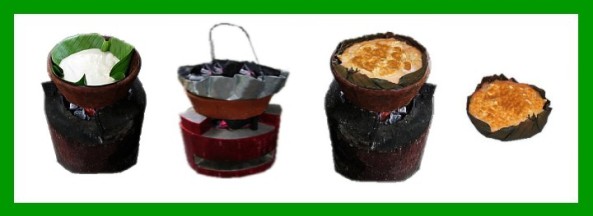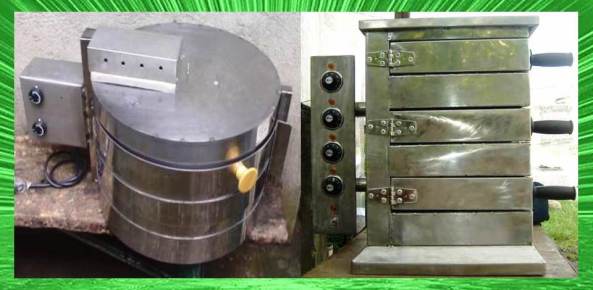Basic Bibingka (Rice cake) baking
When we were younger, my parents used “bibingka” to motivate us going to early dawn mass or “Simbang Gabi”. I still remember bibingka being cooked right in front of us. All you have to say is “regular or special”. And the difference is special has egg while regular has none, Unlike today, bibingka recipes have so many ingredients added for added flavor and presentation.
The changes are not limited to the ingredients but also in the method of baking or cooking, In the early days a clay or ceramic stove, a piece of tin and a clay/ceramic pan is all you have to use to make bibingka. Today, aside from the conventional and microwave oven, different models and style of bibingka oven have been crafted.
The Basic Bibingka Recipe
Ingredients:
- 2 cups long grain or jasmine rice
- 3 tablespoons baking powder
- ¾ cup sugar
- ¼ teaspoon salt
- 1 ¼ cups coconut milk (1 piece coconut)
- Shredded coconut for toppings
- Clean banana leaves
Procedures:
- Grind long grain or jasmine rice into a flour consistency (You can use a rice grinder or a blender or a processor).
- Extract 1¼ cup of coconut milk from shredded coconut meat (you can also use a blender to do this).
- Mix all dry ingredients – ground rice, baking powder, sugar and salt.
- Slowly blend the coconut milk with the mixed dry ingredients.
- Stir thoroughly into a thick smooth liquid mix.
- Line bibingka pan with soften banana leaves to conformed the pan shape
- Scoop 7 spoonful of the mixture into the pan or fill the pan about 3/4.
- Put on top of the clay or ceramic stove (with burning coals) & cover it with tin with burning coals also.
- Cook for 15 to 20 minutes
- Serve hot top with shredded coconut.
- Banana Leaves should be passed over an open flame for a few seconds before use to soften them, so that they do not crack when folded. Alternatively, dip the leaves in boiling water until they just start to soften. They are sold in rectangular sheets in provision shops, supermarket or the local market if you are in the Philippines. If banana leaves are not available substitute with wax paper.
- Thick Coconut Milk is obtained by grating the flesh of 1 coconut intobowl (this yields about 3 cups of coconut flesh) Add 1 cup water, knead thoroughly a few times, then squeeze the mixture firmly in your fist or strain in a cheese cloth. If using canned or packet coconut cream, you normally dilute it, adding 1 cup of water to 1 cup of canned or packet coconut cream to obtain thick coconut milk. This mixing ratio is only a general guide however. Different brands of packaged coconut cream vary in thickness, so follow the package instructions.
- For a fluffier bibingka, separate the egg whites from the egg yolks. Beat egg whites until stiff and fold into the batter.



